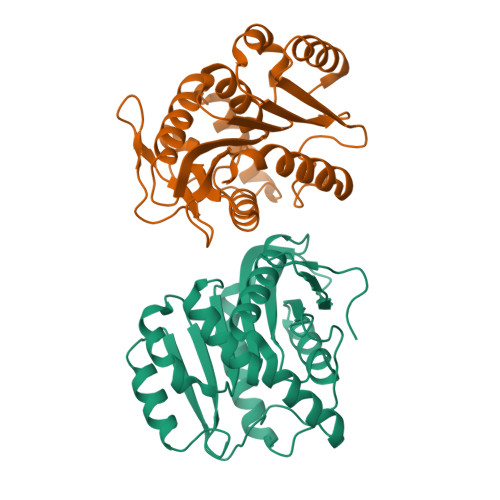Crystallization of dienelactone hydrolase in two space groups: structural changes caused by crystal packing.
Porter, J.L., Carr, P.D., Collyer, C.A., Ollis, D.L.(2014) Acta Crystallogr F Struct Biol Commun 70: 884-889
- PubMed: 25005082
- DOI: https://doi.org/10.1107/S2053230X1401108X
- Primary Citation of Related Structures:
4P92, 4P93 - PubMed Abstract:
Dienelactone hydrolase (DLH) is a monomeric protein with a simple α/β-hydrolase fold structure. It readily crystallizes in space group P2₁2₁2₁ from either a phosphate or ammonium sulfate precipitation buffer. Here, the structure of DLH at 1.85 Å resolution crystallized in space group C2 with two molecules in the asymmetric unit is reported. When crystallized in space group P2₁2₁2₁ DLH has either phosphates or sulfates bound to the protein in crucial locations, one of which is located in the active site, preventing substrate/inhibitor binding. Another is located on the surface of the enzyme coordinated by side chains from two different molecules. Crystallization in space group C2 from a sodium citrate buffer results in new crystallographic protein-protein interfaces. The protein backbone is highly similar, but new crystal contacts cause changes in side-chain orientations and in loop positioning. In regions not involved in crystal contacts, there is little change in backbone or side-chain configuration. The flexibility of surface loops and the adaptability of side chains are important factors enabling DLH to adapt and form different crystal lattices.
Organizational Affiliation:
Research School of Chemistry, Australian National University, Building 137, Sullivans Creek Road, Canberra, ACT 0200, Australia.


















